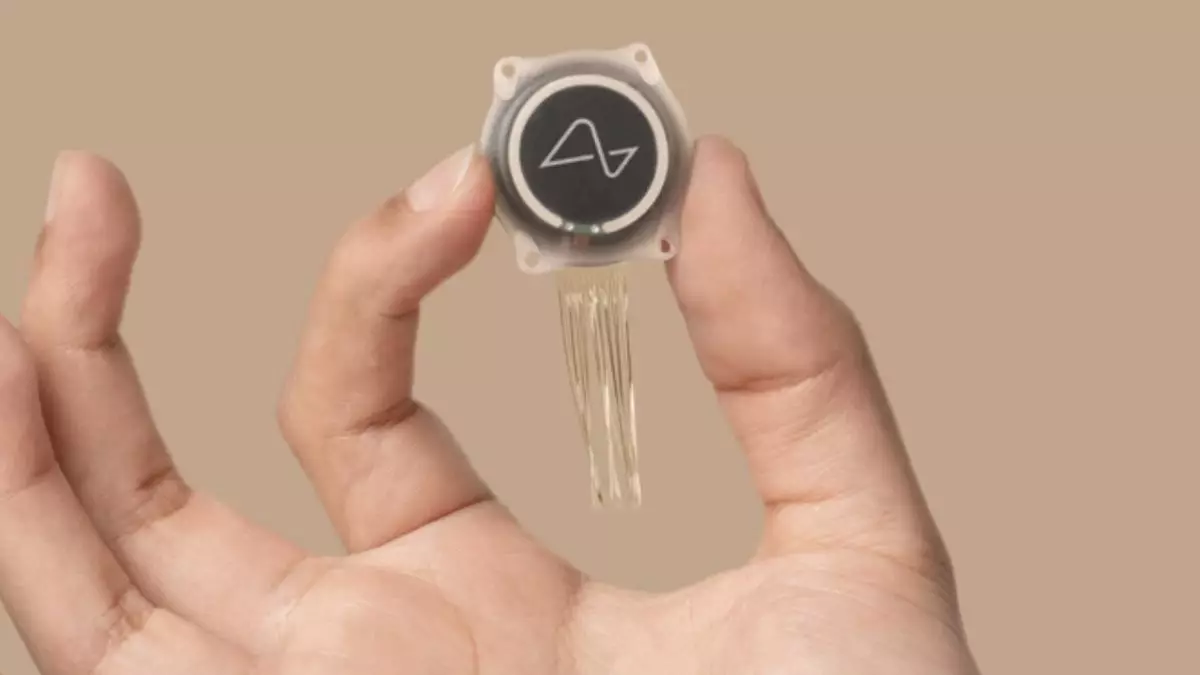Elon Musk’s Neuralink has recently made headlines with the announcement of its Blindsight brain implant, designated as a Breakthrough Device by the FDA. While Musk’s passion for innovation continues to captivate the public, this milestone also raises critical questions about the implications and realities surrounding this cutting-edge technology. Blindsight, with its promise of restoring sight—even in those who have been blind since birth—sets ambitious benchmarks for what medical devices can achieve. However, as with all groundbreaking innovations, the road ahead is littered with both exciting potential and daunting challenges.
At its core, the Blindsight device employs a microelectrode array that interfaces with the visual cortex, stimulating neurons in an effort to replicate visual input. Although this principle is not new in neuroscience, Neuralink aims to advance the technology by increasing electrode density, which optimistically suggests a pathway towards higher-resolution vision. Musk’s bold comparison to Atari graphics illustrates the expected initial quality of sight restored by Blindsight—low-resolution images that reflect the elementary capabilities of early video games. This analogy also serves to temper expectations, yet it questions the feasibility of achieving a sight experience that transcends natural limitations, as Musk suggests, including the ability to see in infrared and ultraviolet spectrums.
Despite the advancements in electrode technology, the challenge lies in translating neuronal stimulation into the complex visual experiences sighted individuals take for granted. Previous attempts at such invasive technologies have faced criticism due to limitations in resolution and the complexity of visual processing. While Musk’s enthusiasm is contagious, it is essential to approach such an assertion with cautious optimism rather than unbridled enthusiasm.
Critics are quick to highlight the limitations that current ongoing research implies for individuals who have been blind from birth. Cognitive psychology and neuroscience suggest that sight is not merely a physical process but also involves intricate brain functions that develop through visual experience. The claim that individuals without prior visual experiences could simply “see” by using the Blindsight device breaks down under scrutiny. Those who have been blind since birth lack the cognitive frameworks necessary to make sense of visual information, representing a grander challenge than merely bypassing the optic nerves.
Musk’s assurance that users could eventually enjoy enhancements greater than natural vision raises significant ethical and scientific questions. The paradigm shift from a rudimentary visual experience to sophisticated cognition could inadvertently foster unrealistic expectations among those affected by visual impairments. Such grand proclamations could lead to disillusionment if the outcomes do not align with the public’s anticipation.
Neuralink was founded in 2016 to explore the possibilities of brain-computer interfaces extending far beyond vision restoration. As the company progresses, its applications could drastically alter our understanding of cognitive disabilities and neurological rehabilitation. Imagine a world where individuals with conditions like paralysis could communicate with their devices simply through thought. This aligns with Musk’s objective of developing technology that can enhance life quality across multiple dimensions.
However, alongside this potential is the necessity for ethical considerations in the design and implementation of such devices. Ensuring equitable access to groundbreaking innovations, addressing concerns regarding data security, and prioritizing informed consent must be at the forefront of the discussion as the technology unfolds. Moving from a conception of merely reinstating lost abilities to enhancing human capabilities invites a deeper philosophical inquiry into what it means to be human in an increasingly augmented world.
Neuralink’s Blindsight embodies both the promise and peril of modern neurotechnology. While Musk’s grand vision inspires enthusiasm and hope in many, it is crucial to navigate this terrain with caution. The line between enabling incredible human experiences and overselling a speculative promise may be thin. As the developments unfold, the dialogue surrounding ethical considerations and realistic expectations must be sustained to ensure a future where technology serves human needs responsibly and equitably. A balance between innovation and realistic optimism could help chart a responsible path through the uncharted territories of the human mind and its vast capabilities.

